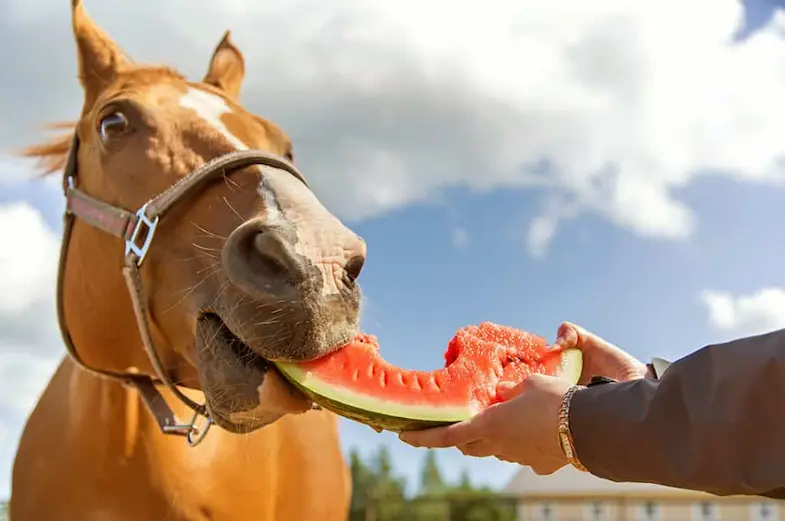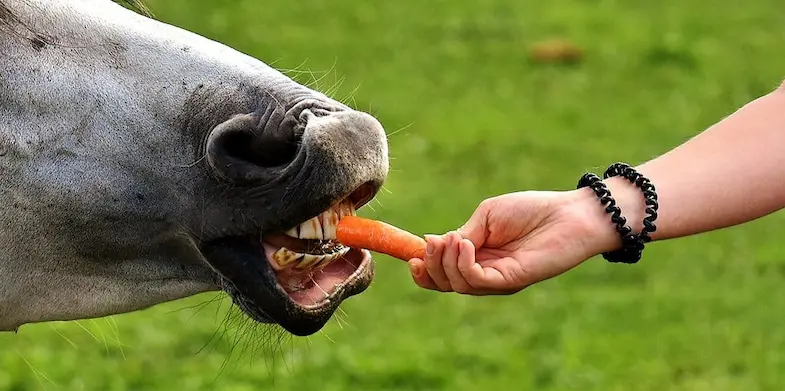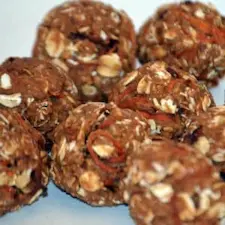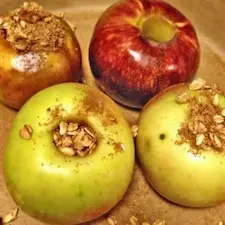With all the talk in the news about how bad for you sugar is many of us are reducing the amount we eat and understandably want to reduce the amount, we feed to our horses in treats. While this is, of course, a good thing it can be difficult to know what treats are the healthiest for horses and which ones should be avoided at all costs. Obviously, you don’t want to feed your horse huge amounts of sugar cubes but did you know what watermelon makes an excellent alternative?
What human foods can horses eat?
It’s great to be able to share your food with your horse but not all human foods are suitable, or even safe, for your horse to eat. We all know that you should never feed chocolate to horses (or any animal for that matter) but did you know the same goes for onions, garlic, and chives? For a more extensive list of what you shouldn’t feed your horse click here. Knowing what you can’t feed to your horse is one thing but obviously, you want to know what you can feed him. Below is a list of some of the more popular human foods that can, in moderation, be fed to horses – although all fruits or vegetables should have their pips, seeds, or stones removed. As with humans though, horses can and do suffer from allergies so if your horse displays any adverse reactions to anything stop feeding it straight away and if necessary speak to the vet.
- Apples
- Apricots
- Bananas
- Beets
- Blackberries
- Blueberries
- Carrots
- Celery
- Cherries
- Coconut
- Corn
- Dates
- Figs
- Grapes (including raisins)
- Grapefruit
- Horseradish
- Lettuce
- Mangoes
- Melon (especially watermelons)
- Oranges
- Peach
- Peanut Butter
- Pears
- Pineapple
- Plums
- Pumpkin
- Rutabagas (or swede)
- Squash
- Strawberries
- Sweet Potatoes
- Turnips
What fruit can horses eat?
I know that I’ve included some fruits above but there’s too many that horses can eat to list them all so instead I thought it might be more helpful to group them by type and include a few examples of fruits that are in that group.
- Citrus – Including lemons, limes, oranges, grapefruits, etc. Don’t feed the peel or pips though.
- Stoned fruit – Generally any fruit that contains one large stone, fruits such as apricots, plums, and peaches. Again you must remove the stone before feeding them to your horse.
- Berries – Berries such as blueberries, strawberries (although not technically a berry), and raspberries. You might be surprised to know that the avocado is scientifically classed as a berry but they must not be fed to horses.
- Melons – All melons are suitable for horses but they especially love watermelon. Unlike citrus fruits though the rind of melons is okay for horses to eat.
- Pome – Pome is derived from the Latin word for fruit and contains things such as apples, pears, quinces, and hawthorn berries.
What are good snacks for horses?
As with all treats they should be fed in moderation and with that in mind, any healthy treat that you feed to your horse is going to be good. If you want to feed your horse treats that will not only be tasty but will do them some good too then you can’t go wrong with things like hawthorn berries and mint leaves. Both of them will help your horse’s digestion but hawthorn berries have a multitude of other benefits too. They’re known to increase stamina and help ease symptoms of rheumatism as well as helping horses with laminitis and navicular syndrome.
Can horses eat peanut butter?
Who doesn’t like a peanut butter sandwich, either with jelly, banana, tomato, or on its own and horses are no exception at all. Just because they love peanut butter it doesn’t mean that they can safely eat it and while there is some disagreement about it the consensus is that, as an occasional treat, it’s okay for horses to have a little bit of peanut butter. If your horse is overweight or suffers from equine metabolic syndrome (a medical term used to describe a horse that’s resistant to insulin) then I wouldn’t feed them peanut butter because of the naturally high levels of sugar. Of course, if your horse has a nut allergy then you absolutely shouldn’t feed them peanut butter either.
So does that mean that I can share my peanut butter sandwiches with my horse?
Sadly no I’m afraid it doesn’t, while they will almost definitely eat it the bread isn’t good for them. A horse’s digestive system was never meant to cope with processed food so, while some horses will be okay, I would never recommend feeding bread to them. It can get stuck in the digestive tract and then drastically increases the chance of colic.
What do horses like to eat the most?
Let’s be honest horses will eat most things, regardless of whether it’s healthy or not but what do they really like to eat? You’ll be very hard pushed to find a horse that doesn’t like things such as apples and carrots but if you’ve ever watched a horse eating watermelon you’ll know they go potty for them!! Horses also love anything with sugar in (regardless of whether it’s artificially added sugars or those that occur naturally), this is because the sugars make them salivate more which in turn aids digestion. Somehow horses seem to instinctively know what will help them.
Are mints okay to feed to horses?
Horses have a very delicate digestive system and mint actually helps with the digestive process, and of course, they absolutely love mints too! If you’re after a healthy treat for your horse though mints might not be the best option, even special mints for horses contain a lot of sugar. If you’re not keen on giving your horse sugary treats then why not feed them a few mint leaves? This will have the same benefit on their digestion but without the sugar. You could even make mint-flavored treats if you wanted to, just follow the recipe below.
Healthy homemade treats for horses
Yes, you can easily buy horse treats and while there’s a vast range of them making them yourself means that you can add your horse’s favorite foods to them. All of the recipes below can easily be made within 30 minutes and will keep for at least a week.
Mint Cookies
Your horse will love the delicious treats, not only do they taste great but the mint in them will help with his digestion too, a definite win-win situation.
Ingredients
- 2 large grated carrots
- Grated apple
- A handful of chopped mint leaves
- 2 tablespoons vegetable oil
- 1/4 cup molasses
- Teaspoon of salt
- Cup of oats
- Cup of flour
Method
Preheat the oven to 350°F/180°C (Gas Mark 4 or 325°F/ 160°C Fan assisted) then mix the carrots, apple, oil, and molasses together in a large bowl. When that’s all mixed together add the rest of the ingredients and separate into bite-sized balls. Line a baking tray with greaseproof paper and place then balls on that before baking for around 25 minutes. Remove from the oven and then allow it to cool.
Cinnamon Cookies
These cinnamon cookies are quick and easy to make and can easily be stored and fed to your horse over the coming weeks – although he’ll like them so much you may find they go much quicker than you thought.
Ingredients
- 2 cups of flour
- A teaspoon of ground cinnamon
- 6 ounces of molasses
Method
Preheat the oven to 325°F/160°C (Gas Mark 3 or 290°F/ 140°C Fan assisted) then gently mix the flour and cinnamon together before mixing in the molasses. Once fully mixed together roll the dough out until it’s around 1/4” thick before cutting it into small squares. Place the cut squares onto a baking tray lined with greaseproof paper and then cook for 12 minutes. Once they’re cooked allow them to thoroughly cool for a few hours before feeding them to your horse.
Peanut Butter Bites
Horses love peanut butter and these peanut butter balls are a great way to feed it to them.
Ingredients
- A cup of sweet feed or oats
- A cup of wholewheat flour
- 1/2 cup of smooth peanut butter
- 1/2 cup of molasses
- 1/4 cup of water
Method
Preheat the oven to 325°F/160°C (Gas Mark 3 or 290°F/ 140°C Fan assisted) before carefully mixing the sweet feed/oats, flour, and peanut butter together. Next mix in the water and molasses then, when it’s all thoroughly mixed together separate it into balls and place them on a sheet of greaseproof paper. Put the greaseproof paper on a baking tray and then place them in the oven for around 10 minutes. Allow them to cool down fully before feeding to your horse.
Oat Bites
A hint of cinnamon makes these treats irresistible to horses, in fact, I have to confess I rather like them myself too!
Ingredients
- Cup of oats
- Cup of flour
- 3 tablespoons of coconut oil
- 3/4 cup of flax meal
- 1/2 teaspoon of baking soda
- 1/2 teaspoon of baking powder
- 1/2 teaspoon of cinnamon
- 1/2 cup of molasses
Method
Preheat the oven to 350°F/180°C (Gas Mark 4 or 325°F/ 160°C Fan assisted) before mixing the oats and flour together in a large bowl. In a separate bowl (or food processor) mix the coconut oil, flax meal, baking soda, baking powder, and cinnamon before gently adding the flour and oats you’ve already mixed together. Next, add the molasses and mix it until you’ve got a dough-like substance. Once everything is mixed together lay bite-sized balls of the mixture onto a greaseproof paper-lined baking tray and cook for around 25 minutes, always allow them to cool before feeding to your horse though.
No-Bake Stuffed Apple Snack
Simple and delicious, your horse will love you forever with these quick and easy to make treats.
Method
Mix everything except the apple together then stuff the mixture into the center of the apple then refrigerate until you’re ready to feed to your horse.
No-Bake Banana Lollies
Just like us horses need to keep cool as the mercury rises and what better way to that than with these delicious banana lollies.
Ingredients
- 4 chopped bananas
- 4 cups of grated carrots
- 2 cups of grain
- 2 cups of oats
- Cup of honey
- Ice
Method
Freeze the chopped bananas for around an hour, in the meantime mix the rest of the ingredients. After an hour remove the bananas and mix with the rest of the ingredients. You can either make this into lots of small treats for your horse or one big ‘ice block’ for him, it’s up to you. When you’ve decided how you’re going to feed it either freeze it whole or separate into an ice cube or lolly molds and then freeze. Once they’ve frozen you can then remove them from the freezer and feed whenever you want.
No-Bake Stuffed Pumpkin
A great Halloween treat for your horse that’s perfect all year round. It also acts as a boredom breaker toy too because your horse will enjoy playing with it, especially as he’ll be rewarded with treats if he does.
Ingredients
- Large pumpkin
- Hay
- Oats
- Fruit (such as watermelon, grapes and blueberries)
- Vegetables (such as rutabagas/swede, turnips and celery)
Method
Cut the lid off the pumpkin and fill it with the rest of the ingredients, you’ll probably have to cram them in a bit as you don’t want to remove any of the pumpkin itself. Once you’ve got all of the ingredients in put the lid back on and give it to your horse.
Unusual treats that are fed to horses
You might be surprised to know some of the more unusual things that people feed to their horses. For example, did you know that in Iceland they feed their Icelandic Horses fish? Yes, I did say fish! They’re feed dried fish during the winter months for extra protein. Apparently, the horses love it although it’s not known for sure if it’s the fish they love or just the salt it contains.
Can humans eat horse treats?
As a rather odd footnote, I thought it might be fun to mention a few of the horse treats that humans can eat. Obviously, things like apples and carrots are suitable for both horses and humans there are quite a few things that are made for horses that humans can eat. Horse mints and chocolate are perfectly okay and safe for humans to eat. I can’t speak about how tasty horse chocolate is but horse mints are really nice though – not quite as sweet as our ones but stronger!. We can, of course, eat oats and other grains so technically we can eat that too although I would add the caveat that human food has to pass for more tests than horse food so, instead of you eat your horse’s oats it’d be better to give him yours!
Further reading
- Common feed types
- Can horses eat bananas?
- Is watermelon okay for horses?
- Surprising foods your horse should eat
- Amazing coconut oil benefits
- What you shouldn’t feed horses
- Feeding a horse with no pasture
- Is my horse healthy?
I hope you found this article helpful. If you did I’d be grateful if you could share it please as it would really help me.
Recommended products
Over the years I have tried hundreds of different horsey products, from various blankets and halters to different treats. Some I’ve loved, others I’ve hated but I thought I’d share with you my top all-time favorite products, the ones I never leave the yard without. I’ve included links to the products (which are in no particular order) that I really think are great.
- Horse Knots by Reference Ready – If you’re like me and enjoy pocket reference guides then you’ll love this knot tying guide. These handy cards can easily fit in your pocket or attach to the saddle for quick reference. They’re waterproof, durable and are color coded to make them easy to follow.
- Mane ’n Tail Detangler – Even if you never show your horse you’ll need to detangle his tail from time to time (and possibly his mane too) which is always a challenging chore! I’ve found that if I run a little bit of detangler through my horse’s tails every few days it stops them from getting matted up and makes combing them easy, even if they’re coated in mud. I don’t know if I should admit to this or not but it also works wonders on my hair.
- TAKEKIT Pro clippers – Over the years I’ve tried a lot of different clippers and while some were obviously better than others I found these to be by far the best. They are heavier than a lot of other clippers but for me, that’s a good thing, it makes them feel more sturdy and hardwearing. On top of that they have a range of speeds so are just as good for clipping your horse’s back as they are his face. I also like the fact that they come in a handy carry case but that’s not for everybody. The company that makes them is super good and incredibly helpful too, a real bonus these days. The only thing I wasn’t keen on was the fact that it doesn’t come with any oil, but that’s not a major problem as it’s not difficult to buy lubricant.
- Shire’s ball feeder – There are so many boredom buster toys out there but I like to use these every day, regardless of whether or not my horses are bored. I find that it helps to encourage my horses to problem solve by rewarding them with treats (or pieces of fruit) but it also mimics their natural grazing behavior which helps to keep them calm and de-stressed.
- Horse safe mirror – This is a strange one that many people are surprised about but I like to put horse safe mirrors in the trailers as well as in the quarantine stalls. It helps to prevent the feeling of isolation by giving the impression of other horses being around. Being herd animals horses can get extremely stressed when they feel that they’re on their own but with these stick-on mirrors, they believe that at least one other horse is with them.
- Rectal thermometer – I know this isn’t glamourous at all but it’s vital for your horse’s well-being to be able to check their temperature and a rectal thermometer is the easiest way of doing this which is why I’ve added it to the list.
Shopping lists
I’ve also put together a few shopping lists of essential items that I’ve found helpful over the years. I’ve broken the lists down into different categories rather than put everything in one massive list 😉




